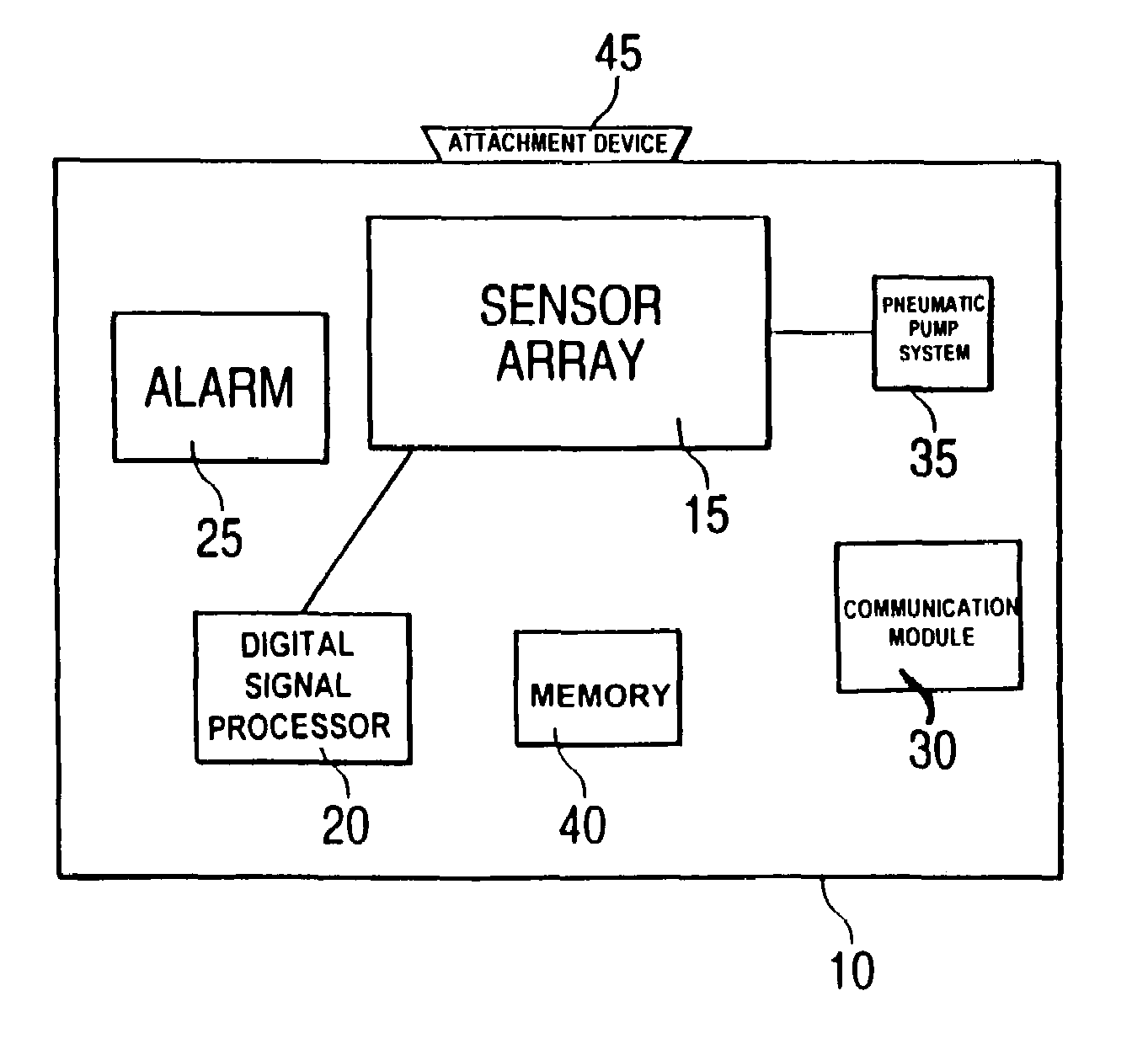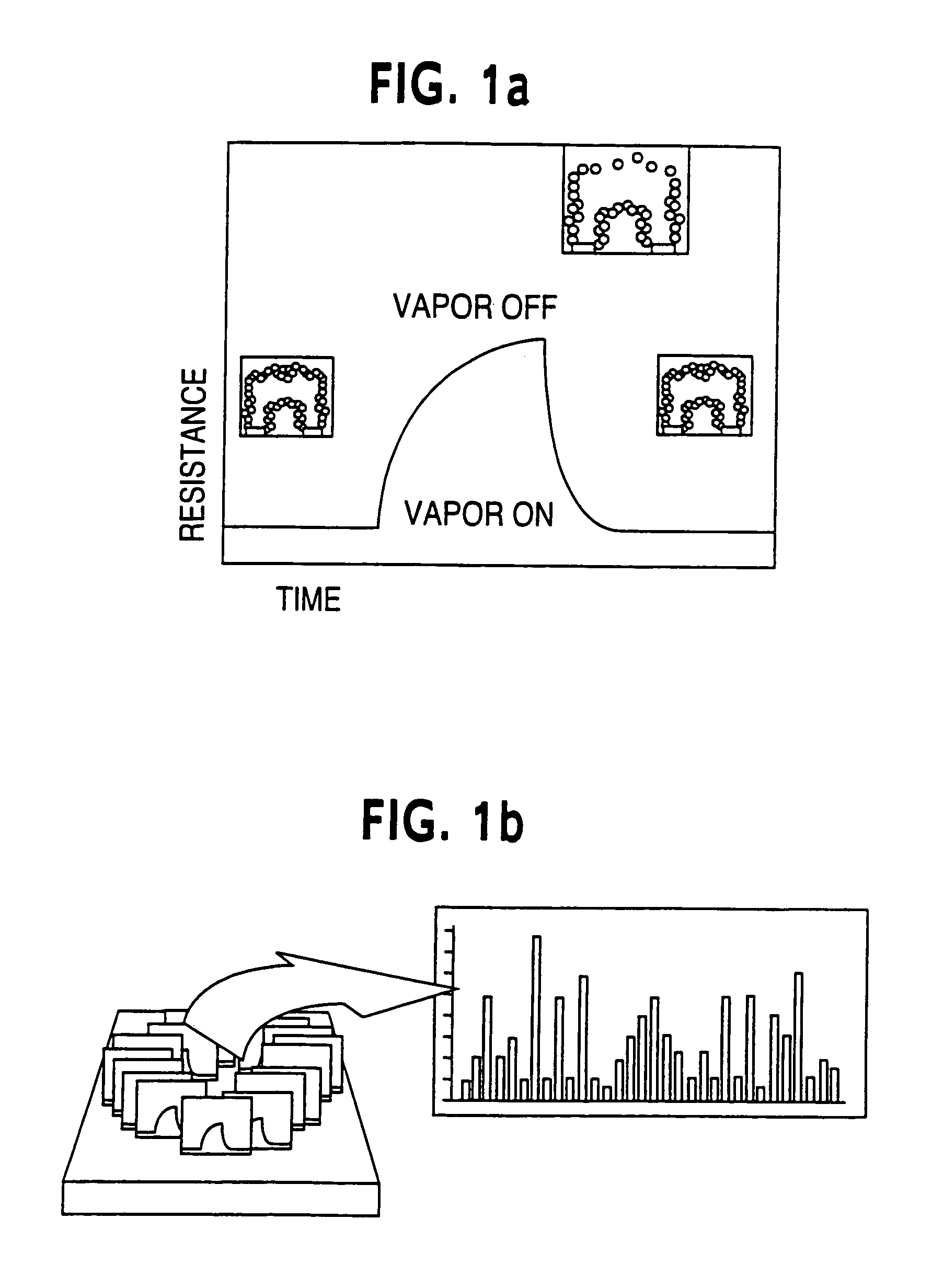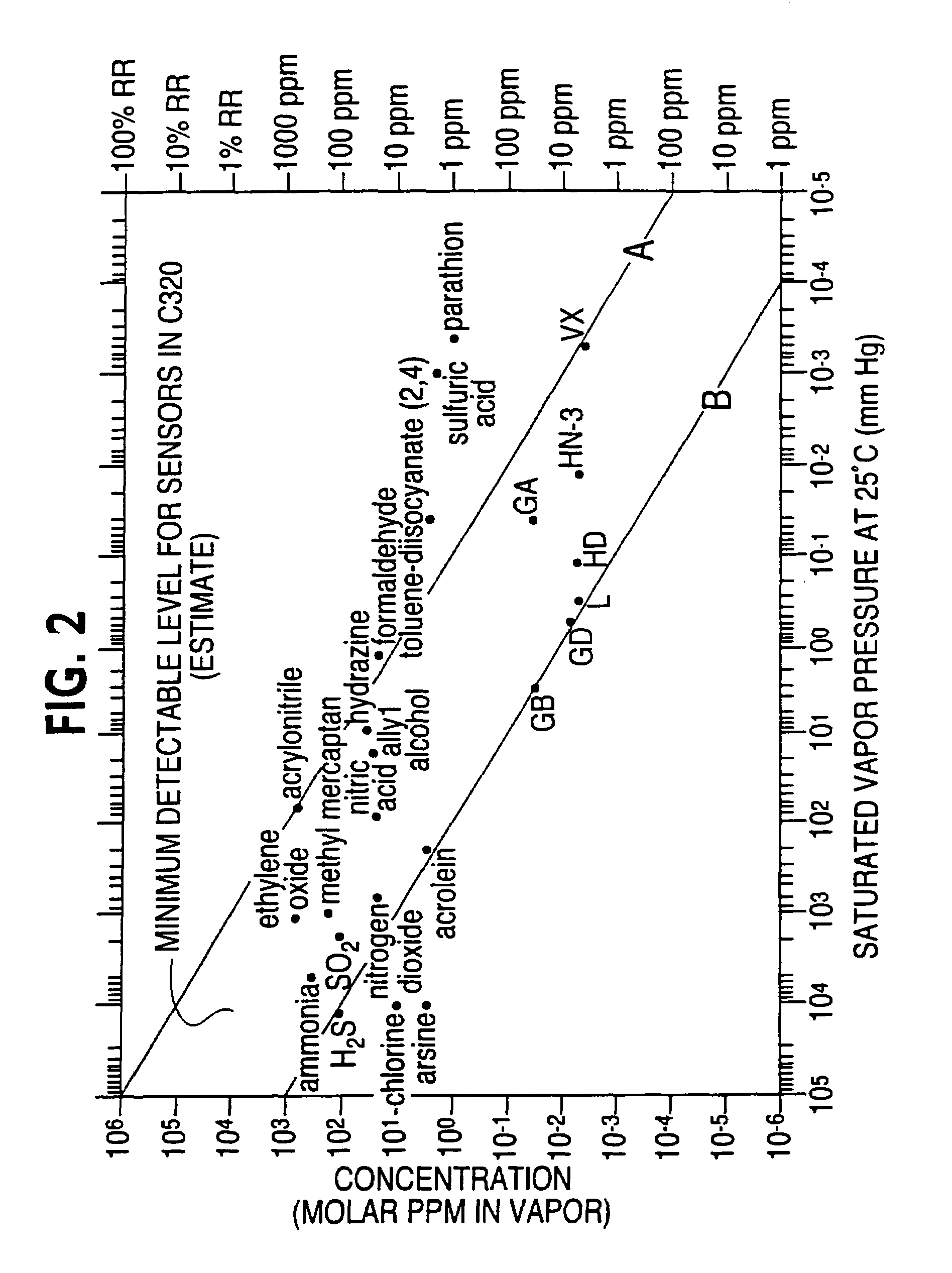Non-specific sensor array detectors
a sensor array and detector technology, applied in the direction of electric vehicles, electric devices, disinfection, etc., can solve the problems that polymer-composite sensors do not have the same humidity performance limitations, and achieve the effects of low power, easy implementation, and low cos
- Summary
- Abstract
- Description
- Claims
- Application Information
AI Technical Summary
Benefits of technology
Problems solved by technology
Method used
Image
Examples
Embodiment Construction
[0056]Detector devices according to the present invention preferably include an array (i.e., at least two) of polymer-composite sensors. A polymer-composite sensor (PCS) typically includes a conducting media, a polymeric phase, and two electrodes. When a voltage is applied across the electrodes, electrons travel across the sensor via pathways consisting mainly of the conducting media, and sensor resistance is measured. Sensor resistance is one of the simplest measurements of the state of the sensor and is related to the number of molecules sorbed in the sensor—a change in sensor resistance is proportional to a change in the mass of sorbed molecules.
[0057]When there is a change in the chemical vapor that is in contact with a sensor, there is a concomitant response such as a change in sensor resistance. A change in the vapor phase causes a change in the chemical potential of its components and a subsequent difference in chemical potential between the sensor and the vapor phase. This d...
PUM
| Property | Measurement | Unit |
|---|---|---|
| power | aaaaa | aaaaa |
| bias currents | aaaaa | aaaaa |
| humidity | aaaaa | aaaaa |
Abstract
Description
Claims
Application Information
 Login to View More
Login to View More - R&D
- Intellectual Property
- Life Sciences
- Materials
- Tech Scout
- Unparalleled Data Quality
- Higher Quality Content
- 60% Fewer Hallucinations
Browse by: Latest US Patents, China's latest patents, Technical Efficacy Thesaurus, Application Domain, Technology Topic, Popular Technical Reports.
© 2025 PatSnap. All rights reserved.Legal|Privacy policy|Modern Slavery Act Transparency Statement|Sitemap|About US| Contact US: help@patsnap.com



